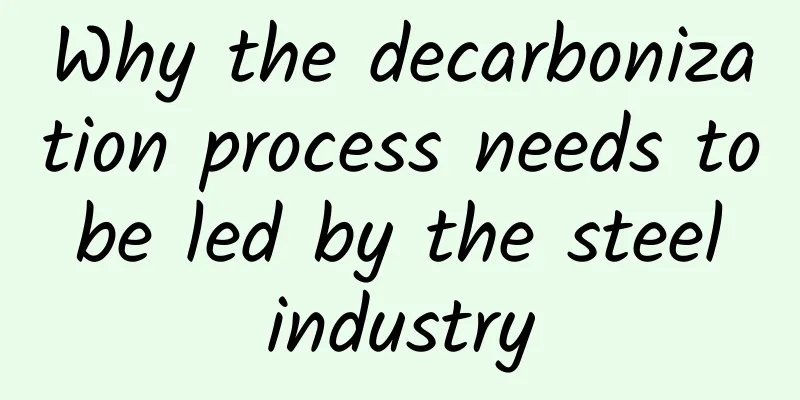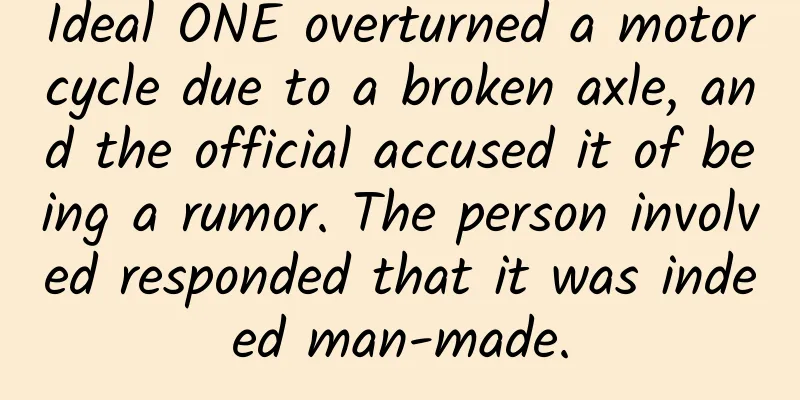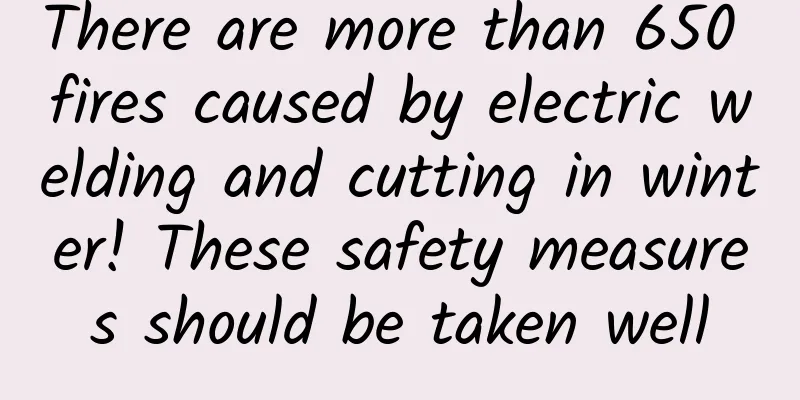Why the decarbonization process needs to be led by the steel industry

|
The steel industry is the largest carbon-emitting manufacturing sector on the planet and is therefore a global decarbonization priority; As a cornerstone of the global economy, steel’s carbon footprint touches nearly every industry, from cars and construction to machinery, transport and energy; If the 2 billion tonnes of crude steel produced globally each year were green steel, this would not only reduce emissions from the steel industry, but would also significantly reduce emissions from industries that rely on steel. Steel production is the most emitting manufacturing industry on the planet, accounting for 7% of all man-made greenhouse gas emissions. This is because steel production relies heavily on high-carbon coal. However, the steel industry has the potential to be one of the best players in leading the global decarbonization effort. Strong demand for steel following the COVID-19 pandemic and government policies supporting low-carbon production have created a ripe environment for steelmakers willing to commit the necessary resources to decarbonise. However, the steel industry is unlikely to achieve the transition to low-carbon steel alone. The key to commercially achieving green steel (steel produced without the use of fossil fuels) on a large scale lies in cross-industry collaboration. According to our calculations, building the necessary capacity to bring green steel to the forefront will ultimately require capital expenditures (CAPEX) of €2 trillion to €3 trillion. Moreover, this investment, although already large, only covers the conversion of steel production capacity and does not support the construction of the necessary green energy to power production. The latter will still require trillions of dollars. Looking for a steel partner It is impossible for any single steel producer, or even the industry as a whole, to provide such a massive capital expenditure between now and 2050. However, the steel industry can pool its resources through partnerships, joint ventures and alliances with companies in other industries, and other industries will also benefit from the transformation of the steel industry. These partners can be upstream suppliers from industries related to steel production, such as energy, mining, chemicals and private capital. At the same time, these partners may also come from the downstream of the steel industry, from the numerous industrial end-users with high demand for steel, such as automotive, transportation and construction companies. Steel is a cornerstone of the global economy. Almost every industry requires steel to some degree. Steel’s critical role, combined with the increasingly urgent need to decarbonize, makes the creation of such an investment ecosystem not only possible but logical. And it’s one of the reasons why steel should be at the forefront of decarbonization. Why start with the steel industry? The world produces about 2 billion tonnes of crude steel each year. If all of this steel were green steel, rather than carbon-intensive steel, emissions from the steel industry would be drastically reduced, as would the carbon footprint of industries such as automotive, construction, transport, energy and manufacturing. For example, steel accounts for more than 50% of the materials in a conventional car, and therefore accounts for the majority of the car's carbon footprint. Therefore, switching to green steel will automatically and significantly reduce emissions for automakers. Another major reason why the steel industry is so well suited to decarbonization is that most of the technologies used in its transformation are already mature. Take the electric arc furnace, for example, which will eventually replace the blast furnace that the steel industry has relied on for more than a century. Electric arc furnaces will be used to produce green steel in the future, but today about 29% of conventional steel is already produced by electric arc furnaces. The difference between current steel production and future green steel is that current electric arc furnaces still use traditional energy, such as a mix of natural gas and coal. In future green steel production, electric arc furnaces will only use renewable energy, including hydropower, nuclear power, wind power, solar power or a combination of them. All of these technologies already exist, which is a major advantage of the steel industry's transformation. Insufficient renewable energy One of the new technologies expected to emerge in green steel production is the use of green hydrogen in the direct reduction of iron. However, achieving this hydrogen production capability would require additional significant capital investment. But there’s a bigger problem facing the global economy. Currently, there isn’t enough renewable energy available to produce enough green hydrogen at a competitive cost to produce green steel on a commercial scale, let alone decarbonize electricity generation. The amount of new wind and solar capacity needed alone would be four times the (already record) expansion in 2020, requiring, in the words of the International Energy Agency, “an unprecedented period of clean energy investment.” Therefore, companies interested in leading the steel industry on a path toward decarbonization should consider bringing energy producers into their ecosystems to help them build sufficient green energy. Two prominent pioneers in green steel – Sweden’s H2 Green Steel and the United States’ Boston Metal – are doing just that. In 2022, Hitachi Energy invested in H2 Green Steel, and Finnish power company Fortum signed an agreement to supply H2 Green Steel with carbon-free electricity, mainly generated by hydropower and nuclear power. On the other hand, Boston Metal is building its first full-scale green steel plant in Brazil (Brazil is the world's second largest hydropower producer by installed capacity). Pioneer in green steel industry In addition to energy, these pioneering companies are also working with one of the industries that will benefit from their success: automakers. H2 Green Steel has partnered with Mercedes-Benz, while Boston Metal has received investment from BMW. For large end-users such as automakers, the advantage is the ability to secure a source of green steel through pre-arranged supply agreements. This is important, especially in the early stages of the transition when green steel is in short supply. The two green steel startups have also received significant investments from some of the world’s largest steelmakers: ArcelorMittal invested in Boston Steel, and Japan’s Kobe Steel invested in H2 Green Steel. Mining giant BHP Billiton also invested venture capital in Boston Metal. If the steel industry is to become a leader in decarbonization, the next seven years will be a critical period to determine its success or failure, as it takes a long time to build the necessary ecosystem and create new capacity. However, as the impacts of climate change become increasingly apparent, the global economy needs to start using resources efficiently and reduce emissions at the largest scale and fastest rate, which provides a strong argument for prioritizing the transformation of the steel industry. Source: World Economic Forum Holger Stamm Partner, Energy and Natural Resources, Oliver Wyman Nils Naujok Partner, Energy and Natural Resources, Oliver Wyman |
<<: The probability of iPhone 6 bending is only 0.00009%
>>: How much does it cost to charge an iPhone 6 for a year?
Recommend
Lucid Group: Saudi Arabian factory to produce 155,000 electric vehicles per year in 2022
Lucid Group is steadily moving towards its overal...
Marketing promotion ineffective? These two things were not done well!
Before discussing marketing, there is a very impo...
I have 11 tricks for writing good information flow copy. The last one made the boss laugh~
Writing a copy depends on inspiration for 30% and...
How did Meilishuo become a dark horse in entertainment marketing?
In a world where time is fragmented and consumer ...
Case Analysis | 16 Industry Information Flow Advertising Case Optimization Collection
Today, the editor has compiled 29 excellent adver...
How do you know what an elephant eats? Look at its poop!
If you were an elephant detective, how would you ...
Can the split posture make Xiaomi TV 3 worthy of the title of "next generation"?
Last week, the term "next generation" c...
Inphic i5 quad-core official in-depth review, the box is also cute
Hello guys! I am back again! Previously, one of ou...
WeChat official account SEO ranking dominates the screen, how does WeChat official account make money?
I have been researching how public accounts can d...
Who conducted the experiment that Einstein called "the most beautiful experiment in physics"?
In 1895, Roentgen discovered X-rays, but what exa...
5G mobile phones, waiting for spring
[[330468]] Currently, from mobile phone manufactu...
Jilin SEO Training: What are the methods of Baidu promotion? What methods can SEO use?
There are many SEO methods to meet the needs of d...
Half-hour comic book on Chinese history: Mythological China (1)
Mixed Knowledge Specially designed to cure confus...
Porsche slashes prices, loses its strength and endorses, the disenchantment of European luxury cars is just the beginning of cultural collapse
Ever since "Porsche price falls below 400,00...
iOS 12.1.2 shows 4G but can't connect to the Internet? Here is a temporary solution
A few days ago, after Apple pushed the iOS 12.1.2...









